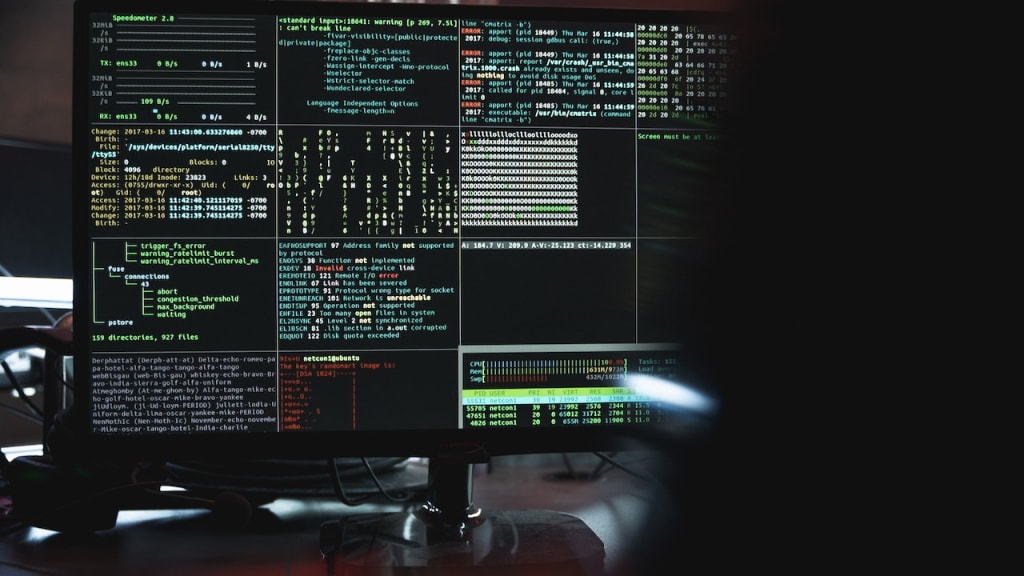CYBER SECURITY
The Impact Of Artificial Intelligence On Cyber Security

Introduction:
Artificial intelligence (AI) has changed the game in many areas, and its impact on cybersecurity is no exception. The combination of artificial intelligence and cybersecurity has the potential to revolutionize the way organizations detect, prevent, and respond to cyber threats. This paper examines the impact of artificial intelligence on cyber security and explores its applications in threat detection, incident response, authentication and access control. In addition, it explores the ethical considerations surrounding the use of AI in cybersecurity and discusses future challenges that organizations may face when implementing AI technologies.
1. Detection of artificial intelligence-driven threats:
Artificial intelligence technologies such as machine learning and deep learning have revolutionized threat detection capabilities. By analyzing vast amounts of data and identifying patterns, AI algorithms can proactively detect and mitigate potential threats. Machine learning algorithms excel at identifying anomalies and enable organizations to respond quickly to evolving cyber threats. Deep learning algorithms with the ability to process unstructured data enable the detection of complex attacks that traditional signature-based systems might miss. These AI-powered threat detection mechanisms allow organizations to stay one step ahead of cybercriminals.
2. AI-Enhanced Incident Response:
Incident response is a critical aspect of cybersecurity, and artificial intelligence can greatly increase its effectiveness. AI automates various aspects of incident response, such as alert triage, threat investigation and mitigation. Through advanced analytics and machine learning algorithms, artificial intelligence can process and analyze vast amounts of security data, enabling threat identification and real-time response. AI incident response systems can reduce response times, provide actionable insights, and help security teams focus on critical tasks. However, it is essential to find a balance between automation and human supervision to ensure effective incident resolution.
3. AI-based authentication and access control:
Artificial intelligence technologies are reshaping authentication and access control mechanisms, improving both security and user experience. Behavioral biometrics and AI-powered analytics can evaluate user behavior patterns and enable continuous and dynamic authentication. This approach increases security by detecting anomalous behavior and unauthorized access attempts in real time. AI algorithms can also analyze contextual information such as device, location and time to make accurate access control decisions. However, ensuring user privacy and addressing biases in AI algorithms remain critical factors in AI-based authentication systems.
4. Ethical considerations in AI-cybersecurity:
While artificial intelligence offers significant cybersecurity benefits, ethical considerations must be carefully considered. Biases embedded in AI algorithms could lead to discriminatory results, especially in threat detection and verification. Transparency and explainability of AI models are essential to ensure accountability and trust. In addition, there is a need for robust governance frameworks to oversee AI systems and prevent their abuse. Organizations must find a balance between the power of artificial intelligence and the ethical implications it poses for cybersecurity.
5. Future challenges and conclusion:
The future of artificial intelligence in cybersecurity presents both opportunities and challenges. Adversary attacks using artificial intelligence systems pose a significant threat and require constant research to develop robust defenses. Organizations must deal with a shortage of skilled professionals capable of deploying and managing artificial intelligence technologies in cybersecurity. Furthermore, to realize the full potential of AI, it is essential to maintain a human-centric approach where AI augments human knowledge. By addressing these challenges, organizations can leverage AI capabilities to strengthen cybersecurity defenses and protect against evolving cyber threats.
6. Threat intelligence and predictive analytics based on artificial intelligence:
Artificial intelligence plays a key role in threat intelligence and predictive analytics, enabling organizations to proactively identify and respond to emerging cyber threats. AI algorithms can analyze vast amounts of data from a variety of sources, including threat intelligence sources, security logs, and external indicators of compromise. Using machine learning and natural language processing techniques, AI can extract useful insights from unstructured data such as social media posts and online forums. This allows organizations to identify potential threats and vulnerabilities in real-time, enabling proactive mitigation measures.
Additionally, AI-based predictive analytics can forecast and predict potential future threats based on historical data and patterns. By analyzing historical attack data and threat trends, AI algorithms can identify indicators of upcoming attacks, allowing organizations to strengthen defenses and prioritize resource allocation. AI-driven threat intelligence and predictive analytics enable organizations to stay ahead of evolving cyber threats and increase their ability to prevent attacks and minimize damage.
The incorporation of artificial intelligence into threat intelligence and predictive analytics is a significant advance in cybersecurity, offering organizations proactive and data-driven insights that can strengthen their defense strategies.
Conclusion:
Artificial intelligence is changing the cybersecurity landscape, offering new capabilities for threat detection, incident response, authentication, and access control. However, organizations must navigate ethical considerations and address future challenges to harness the full potential of AI in protecting digital environments. By adopting AI responsibly, organizations can strengthen their cybersecurity posture in an increasingly complex threat landscape.






Comments
There are no comments for this story
Be the first to respond and start the conversation.